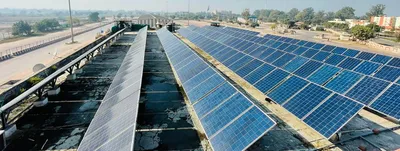Originally published in The Tribune

Public-Private Partnerships (PPPs) have the potential to revolutionise infrastructure development, and services delivery by blending private sector capital and expertise with public sector oversight. For Punjab, which has over 147 PPP projects worth ₹59,358 crore in critical sectors like roads, bridges, healthcare, and education, this model could be the key to unlocking sustained economic growth. However, despite the scale of these projects, systemic inefficiencies, governance issues, and a narrow strategic focus have hindered their transformative potential. To fully leverage the power of PPPs, Punjab must embrace a comprehensive reset, aligning these initiatives with the state’s long-term economic and social goals.
Despite ambitious plans, Punjab’s track record in executing PPP projects has often fallen short. High-profile failures, such as the Ludhiana-Talwandi NHAI project and the stalled food storage silo initiatives, reveal deep-rooted inefficiencies. Even as demand for modernised grain storage facilities grows, no silos have been built since 2021. Similarly, three commercial complexes in Amritsar, Mohali, and Ludhiana—requiring an investment of over ₹500 crore—remain incomplete. These missed opportunities reflect a broader issue: the state is struggling to follow through on significant infrastructure investments, resulting in wasted resources and unfulfilled potential (source: PPP in India portal; and Lok Sabha Unstarred Questions).
A fundamental problem lies in the skewed allocation of risks. Private sector entities often shoulder the burdens of land acquisition delays, regulatory uncertainties, and incomplete infrastructure, which discourages investment and delays project completion. This imbalance undermines the core principle of risk-sharing in PPPs. Punjab’s focus on “showcase” projects has often diverted attention away from addressing critical systemic needs. For example, the state’s proposed medical colleges in Gurdaspur and Pathankot have made little progress, reflecting a disconnect between investments and the real challenges faced by the healthcare sector. Punjab’s reliance on Viability Gap Funding (VGF) further underscores a lack of financial confidence in the private sector’s ability to execute projects without government subsidies, raising concerns about the sustainability of its PPP mode (source: Committee Report: Department of Economic Affairs).
Moreover, the state’s PPP landscape has remained narrow, focusing predominantly on traditional infrastructure projects like roads, bridges, and silos, while emerging sectors such as renewable energy, education, food processing, and the circular economy remain underexplored. This narrow focus limits the potential of PPPs to address Punjab’s evolving socio-economic challenges. Governance bottlenecks, such as procedural delays, opaque decision-making, and weak contract enforcement, only exacerbate these issues, undermining investor confidence and project outcomes.
To overcome these challenges, Punjab must adopt a more strategic, diversified, and transparent approach. First, the state must recalibrate risk allocation. Risks must be distributed more equitably between the public and private sectors. Private entities should manage risks related to construction and service delivery, while the government should focus on addressing land acquisition issues, regulatory challenges, and policy alignment. This would ensure a fairer balance and encourage more private sector investment.
Second, Punjab must explore innovative revenue models to make projects both financially viable and socially impactful. One such model is Payment for Ecological Services (PES), successfully implemented in Costa Rica to incentivize forest conservation through revenue generated by carbon credits and biodiversity offsets. This model could be adapted in Punjab’s Kandi Belt for afforestation and environmental preservation, with potential revenue sources that align economic growth with sustainability. Further Output/Outcome-Based Payments (OBP), which link funding to tangible results such as improved healthcare or educational outcomes, could incentivize high-quality service delivery and ensure that projects produce measurable societal benefits (source: World Bank PES program analysis; Costa Rica PES Case Studies).
Expanding the scope of PPPs into high-growth sectors is equally crucial. Renewable energy offers tremendous potential, as Punjab seeks to meet rising energy demands while reducing dependence on fossil fuels. Similarly, education-focused PPPs could help modernise schools and colleges, emphasising vocational training to address the skill gaps in Punjab’s workforce. Circular economy initiatives in waste management, recycling, and sustainable practices could provide both environmental and economic benefits. Moreover, the food processing industry, with its potential to add value to farmers’ produce, should be prioritised as a critical area for PPPs.
None of these initiatives can succeed without strengthening Punjab’s governance and regulatory frameworks. Updating the Punjab Infrastructure Act of 2000 is essential to modernise the state’s regulations, ensuring transparency, streamlined processes, and rigorous enforcement of state support agreements. The Surat Municipal Corporation’s wastewater recycling project serves as an excellent example of how robust governance, clear demand forecasting, and innovative financing can ensure long-term sustainability and boost investor confidence (source: Surat Municipal Corporation case study, 2022).
Engaging a wide range of stakeholders—including citizens, private sector players, and experts—during the planning and execution stages will help ensure that projects meet public needs while delivering tangible, impactful results.
Recent budget announcements indicate that Punjab recognizes the importance of PPPs in driving growth. The 2023 budget emphasised developing tourist destinations through PPPs, while the 2022 budget highlighted sports infrastructure projects. However, these initiatives need to be integrated into Punjab’s long-term development strategy. For example, eco-tourism projects should prioritise sustainability and community participation, while sports infrastructure should balance grassroots development with high-performance facilities (source: Punjab Budget Documents, 2022–2023).
Punjab stands at a critical crossroads in its PPP journey. While the state has recognized the transformative potential of these partnerships, inefficiencies, governance challenges, and a limited strategic focus continue to hold it back. To chart a new course, Punjab must recalibrate its risk-sharing models, adopt innovative financing mechanisms, diversify into high-growth sectors, and strengthen governance frameworks. By embracing these reforms, Punjab can modernise its infrastructure, foster sustainable economic growth, and improve public welfare. A transparent and inclusive approach will set a new benchmark for PPP success, enabling Punjab to harness the transformative power of these partnerships and pave the way for a brighter, more sustainable future.
